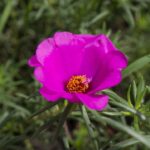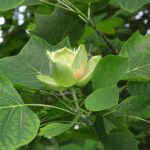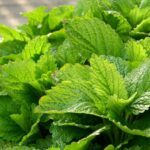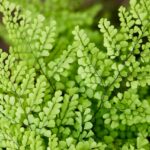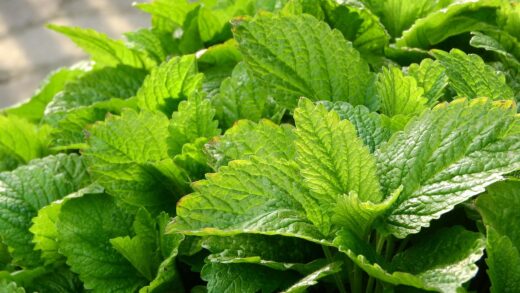Diseases and pests of the Hosta

Despite their reputation for being robust and low-maintenance, Hostas are not entirely immune to the challenges posed by various diseases and pests. For gardeners who cherish the flawless, ornamental quality of Hosta foliage, identifying and managing these issues is a critical aspect of their cultivation. The most common problems are often caused by pests that chew and disfigure the leaves, such as slugs and deer, while certain viral and fungal diseases can also compromise the plant’s health and appearance. Proactive monitoring and the implementation of timely, effective control measures are key to protecting your investment and ensuring your Hostas remain the stunning centerpiece of your shade garden. This guide offers a detailed look at the most prevalent diseases and pests affecting Hostas and provides practical strategies for their management.
By far, the most ubiquitous and frustrating pests for Hosta enthusiasts are slugs and snails. These mollusks are voracious feeders that are most active during the cool, damp conditions of the night or on overcast days. They use their rasping mouthparts to chew irregular, ragged holes in Hosta leaves, and a severe infestation can quickly reduce a beautiful specimen to a tattered, lace-like skeleton. The silvery slime trails they leave behind as they move across the leaves and soil are a tell-tale sign of their presence, even if the culprits themselves are hiding during the day. Their activity typically begins in early spring as the new leaves are emerging and continues throughout the growing season.
Effective control of slugs and snails requires a multi-pronged approach, often referred to as integrated pest management. One of the most effective cultural controls is to create an environment that is less hospitable to them. This includes reducing potential hiding places by clearing away leaf litter, boards, and stones near your Hosta beds. Improving air circulation by properly spacing plants and watering at the base of the plant in the morning can help the soil surface dry out more quickly, making it less attractive to these moisture-loving pests. Physical barriers, such as a ring of crushed eggshells, diatomaceous earth, or copper tape placed around the base of the plant, can also be effective deterrents.
For more direct control, several options are available. The simple method of going out into the garden with a flashlight after dark to hand-pick the slugs and snails off the plants can be surprisingly effective, albeit time-consuming. Setting up shallow traps filled with beer or a yeast and sugar solution will attract and drown many of them. If these methods are insufficient, various slug and snail baits are commercially available. The most common baits contain metaldehyde, which is effective but can be toxic to pets and wildlife. A safer alternative is baits containing iron phosphate, which is also effective against slugs and snails but is non-toxic to other animals and breaks down into fertilizer for the soil.
It is important to begin your slug and snail control efforts early in the spring, just as the Hosta pips are beginning to emerge. This is when the new growth is at its most tender and vulnerable, and a small amount of feeding damage at this stage can become a large, unsightly hole as the leaf expands to its full size. By managing the population early in the season, you can prevent them from reproducing and building up to more damaging numbers as the summer progresses. Consistent vigilance and a combination of control strategies will provide the best defense against these persistent garden pests.
More articles on this topic
Common chewing insects and other pests
Beyond slugs and snails, Hostas can occasionally be troubled by a few other chewing insects and pests that can cause damage to their prized foliage. Cutworms are a common culprit in the spring, living in the top layer of the soil and emerging at night to feed. They get their name from their habit of chewing through the stems of young plants at the soil line, effectively “cutting” them down. With Hostas, they are more likely to chew holes in the emerging leaves or sever the tender leaf petioles. A protective collar made from cardboard or plastic pushed into the soil around the base of a young plant can prevent cutworms from reaching the stems.
Grasshoppers and caterpillars, including various moth larvae, can also cause damage by chewing holes in Hosta leaves during the summer months. While they are not usually a major problem in a balanced garden ecosystem with plenty of natural predators, their populations can sometimes surge and cause noticeable defoliation. Hand-picking is an effective control method for both, especially if the infestation is not widespread. For more severe caterpillar problems, an application of Bacillus thuringiensis (Bt), a naturally occurring bacterium that is toxic only to caterpillars, can be a highly effective and environmentally safe solution.
Voles, which are small, mouse-like rodents, can pose a very different and more insidious threat to Hostas. Unlike pests that feed on the leaves, voles tunnel underground and feed on the roots and crown of the plant. The damage often goes unnoticed until the plant starts to decline, with wilting or stunted growth, and the entire plant may feel loose in the soil. If you suspect voles, look for their characteristic silver-dollar-sized tunnel openings and surface runways in the lawn or garden beds. Controlling voles can be challenging, often requiring the use of traps or deterrents like castor oil-based granules applied to the soil. Planting Hostas in a wire mesh basket can also provide physical protection for the root system.
Lastly, while less common, black vine weevils can also be a pest of Hostas, particularly those grown in containers. The adult weevils are nocturnal and chew distinctive C-shaped notches along the edges of the leaves, which is primarily cosmetic damage. The more serious threat comes from their larvae, which live in the soil and feed on the roots and crown of the plant, similar to voles. This root damage can lead to wilting and the eventual death of the plant. Control often involves applying beneficial nematodes to the soil to parasitize the larvae or using specific insecticides as a soil drench.
More articles on this topic
Recognizing and managing Hosta Virus X
Hosta Virus X, commonly known as HVX, is a highly contagious and incurable plant virus that poses a serious threat to Hosta collections. It is a virus that is specific to Hostas and has become a significant concern for gardeners and nurseries alike since it was first identified. The symptoms of HVX can be highly variable and can sometimes mimic other issues like sun scorch or genetic variegation, making diagnosis challenging. Common symptoms include mottled or mosaic patterns of light and dark green on the leaves, ring spots, leaf twisting or deformation, and a “bleeding” of color along the leaf veins. In some cases, the tissue may appear sunken or collapsed, creating a divoted texture on the leaf surface.
The primary mode of transmission for HVX is through the plant’s sap. This means the virus is most commonly spread mechanically from an infected plant to a healthy one via contaminated tools. Pruning shears, knives used for division, and even hands that have handled an infected plant can easily transfer the virus. It is also spread through the propagation and sale of infected plant material, which is how the virus has become so widespread. It is crucial to understand that HVX does not spread through the air, water, or by insects; it requires direct sap-to-sap contact.
Because there is no cure for Hosta Virus X, prevention and sanitation are the only effective management strategies. The single most important preventative measure is to purchase new Hostas only from reputable growers and nurseries that are knowledgeable about HVX and have testing protocols in place. When introducing new plants into your garden, it can be wise to quarantine them in a separate area for a season to observe them for any suspicious symptoms before planting them among your established collection. When working in your garden, always practice strict tool sanitation. After working with each individual Hosta plant, sterilize your tools by wiping them down with a 10% bleach solution or 70% isopropyl alcohol to prevent any potential cross-contamination.
If you discover a Hosta in your garden that you strongly suspect is infected with HVX, the only responsible course of action is to remove and destroy it promptly to prevent the virus from spreading to your other Hostas. Do not compost the infected plant, as the virus can persist in the plant tissues. The best method of disposal is to bag it and put it in the trash. It is also important to thoroughly clean the tools used to remove the plant. Since the virus does not persist in the soil, it is generally considered safe to plant a non-Hosta plant in the same location, but it is wise to wait a few months before planting another Hosta in that exact spot as a precaution against any remaining infected root fragments.
Fungal and bacterial diseases
While Hostas are generally resistant to many common plant diseases, they can be susceptible to certain fungal and bacterial ailments, particularly when environmental conditions are favorable for pathogen development. Anthracnose is one of the most common fungal leaf spot diseases affecting Hostas. It typically appears during warm, wet weather and manifests as large, irregular spots on the leaves with dark borders and a tan or whitish center. Over time, the center of these spots can fall out, giving the leaf a tattered, shot-hole appearance. The disease is often most severe on the lower leaves where humidity is highest.
Good cultural practices are the best defense against anthracnose and other fungal leaf spot diseases. Proper plant spacing is essential to promote good air circulation, which helps the foliage dry quickly after rainfall or irrigation. As previously mentioned, watering at the base of the plant using a soaker hose or drip line is highly recommended over overhead sprinkling, as it keeps the leaves dry and reduces the chances of fungal spore germination. If you see signs of infection, promptly remove and destroy the affected leaves to prevent the disease from spreading. In severe or persistent cases, an application of a copper-based or other appropriate fungicide can help to control the disease.
Another issue that can arise, especially in poorly drained or overly wet soils, is crown rot, also known as southern blight. This is a serious fungal disease caused by the pathogen Sclerotium rolfsii, which attacks the plant at the crown, right at the soil line. The initial symptoms often include the yellowing and wilting of the lower leaves, which can quickly progress to the collapse of the entire plant. A close inspection of the crown will reveal a soft, mushy rot, often accompanied by a white, fan-like mat of fungal growth (mycelium) and small, mustard-seed-like structures called sclerotia.
If crown rot is detected, immediate action is required. The infected plant and the surrounding soil should be carefully dug up and removed from the garden to prevent the spread of the resilient sclerotia, which can survive in the soil for years. Do not compost this material. Improving soil drainage is the most critical preventative measure against this disease. Ensure your Hosta beds are not in low-lying areas where water collects, and amend heavy clay soils with organic matter to improve their structure. A thin layer of coarse sand or grit applied around the base of the plants can also help to keep the crown area drier and less susceptible to infection.
Environmental and physiological problems
Not all problems that affect Hosta foliage are caused by pests or diseases; some are the result of environmental or physiological stress. Leaf scorch is one of the most common issues, particularly for Hostas planted in a location that receives too much direct sun. The symptoms typically appear as browning or yellowing along the margins of the leaves, or in large, dried-out patches, especially on the parts of the plant most exposed to the sun. This occurs when the leaves lose water through transpiration faster than the roots can absorb it from the soil. Blue-leaved and dark green varieties are generally more susceptible to scorch than those with lighter, more chartreuse foliage.
The most effective solution for leaf scorch is to provide the plant with more shade, especially from the intense afternoon sun. If the plant is already in the ground, you may need to transplant it to a more suitable location in the garden. Alternatively, you could add a taller, sun-blocking plant nearby or erect a temporary shade cloth during the hottest part of the summer. Ensuring the plant receives adequate and consistent moisture is also critical, as drought stress will significantly exacerbate the effects of sun exposure. A thick layer of mulch will help to keep the soil cool and moist, providing a buffer against these stressful conditions.
Frost damage is another environmental problem that can affect Hostas, especially in the spring. A late spring frost that occurs after the tender new leaves have emerged can cause significant damage. The affected leaves will appear water-soaked and translucent at first, and then will quickly turn black or brown and collapse. While this damage can be unsightly, it is not usually fatal to the plant, as the crown will typically send up a new flush of leaves. To prevent frost damage, keep an eye on the weather forecast in the spring and be prepared to cover your emerging Hostas with a blanket, sheet, or frost cloth if a late frost is predicted.
Finally, nutrient deficiencies or toxicities can also be considered physiological problems. As discussed in the context of fertilization, an incorrect soil pH can lead to issues like iron chlorosis, where the leaves turn yellow between the veins. Conversely, over-fertilization can lead to a buildup of fertilizer salts in the soil, which can burn the plant’s roots and cause browning along the leaf margins, mimicking the symptoms of scorch. Maintaining healthy, well-drained soil rich in organic matter is the best way to prevent most of these issues, as it creates a buffered and resilient environment where the plant can thrive.





